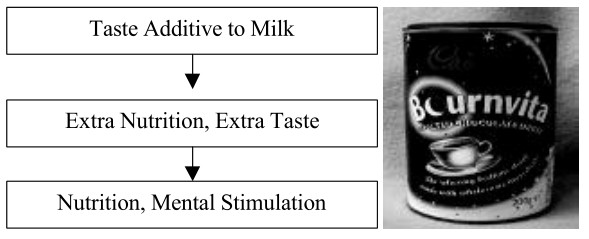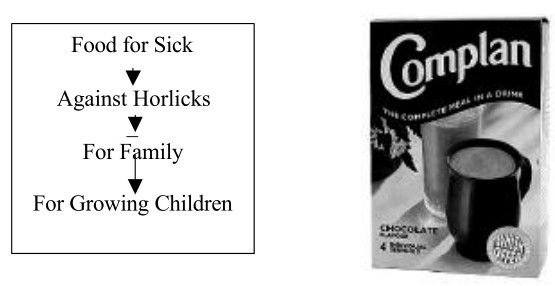A brand that has been existent in the market for sometime may lose touch with consumers because the consumer’s needs may have changed. Thus, it is possible that a brand is fundamentally sound and yet is not in sympathy with the consumer’s current concerns. Such a situation calls for a change in positioning. The following examples illustrate this concept.
Lipton Yellow Label Tea
Lipton Yellow Label Tea was initially positioned as a delicious, sophisticated and premium tea for the global citizen. The advertisements also echoed this theme. For instance, all the props and participants in the advertisements were foreign. It is possible that this approach did not find favor with the customers. The repositioning specifically addressed the Indian consumer through an Indian idiom.

Visa Card
Visa Card had to change its positioning to make itself relevant to customers under changed circumstances. Initially it asked the customer to “pay the way the world does” (1981). This is to give its card an aura of global reach. But as more and more cards were launched on the same theme, to put itself in a different league, it positioned itself as the “world’s most preferred card” (1993). To highlight the services it provided, it shifted to the platform of “Visa Power” (1995). This focus on explaining the range of services available with the card continues till date (“Visa Power, go get it”).

Cadbury’s Bourn vita Bourn vita is a case of how a brand changes its positioning in keeping with the changing needs of customers. Initially, the emphasis was on its good taste (“taste additive to milk”). Then as the customers became more demanding, the pitch was modified to include the nutritive aspect as well (“extra nutrition, extra taste”). Later, to make itself more attractive it claimed to give sharpness of mind (“nutrition, mental stimulation).

Increasing Occasions For Use Sometimes the positioning chosen becomes too narrow. This might lead to a situation of having too few customers. Such a small franchise may make the brand commercially unviable. One of the methods of increasing use is by increasing the usage rate. This is done by increasing the number of occasions available for use.
Cadbury’s Drinking Chocolate Cadbury’s Drinking Chocolate initially called itself “good night cap” signifying the time of consumption. The user base possibly proved to be small. In an effort to increase the numbers, it positioned itself as a drink for the “happiest time of the day.” This was an effort to get the brand consumed during any time of the day thereby increasing the occasions for use.

Monaco
Monaco biscuits were initially positioned as the “perfect salted” biscuits. To increase the occasions for use, it pitched itself as “Excellent plain, terrific with toppings.” What was essentially a plain, salted biscuit turned itself into a biscuit that can be consumed as it is or with toppings, thereby increasing its occasions for use.

Dettol Liquid Dettol-the antiseptic liquid is basically used to prevent cuts and gashes from developing sepsis. To increase the occasions for its use, it shows several other avenues. These are i) for the shaving mug ii) for washing babies’ clothes iii) for use during illness for washing and swabbing. These uses are listed on the Dettol bottle itself.
Odomos – Odomos cream was one of the first mosquito repellants in the market. It was essentially pitched as an indoor mosquito remedy. For some time it was very popular. Later, as mosquito mats entered the market, creams became less popular as they were seen as sticky. One way of combating the mats was to fight them outdoors. Since outdoor locations normally have no power supply, cream was positioned for “indoor as well as outdoor” use. This broadened the competitive space besides increasing the occasions for use.
Vicks Vaporub
Vicks Vaporub was initially and child’s cold rubs. Later in an attempt to increase uses as well as users, it was positioned as an “adult cold rub for anytime during the

Search For A Viable Position
Complan – Complan had at various times positioned itself as “food for the convalescing”, “against Horlicks,” “for the family” (fussy child, busy executive, tired housewife). This is possibly because it was trying to get a viable positioning statement. Finally, it seems to have found one in the positioning line “for growing children2.”

Milkfood’s Yoghurt
Milkfood’s Yoghurt was initially positioned as “anytime snack.” This did not seem to have worked. So the pitch was changed to “It is not just curd.” This could be hinting at both the fun value and the nutritive value of Yoghurt. Eventually, this positioning also did not work. Positioning it as “mishti-doi” (sweet curd) for the East and North Eastern parts of India would have possibly given it a better opportunity for success.
 Learn, Certify, Succeed: A Smarter Way to become Job-Ready Now !
Learn, Certify, Succeed: A Smarter Way to become Job-Ready Now !

